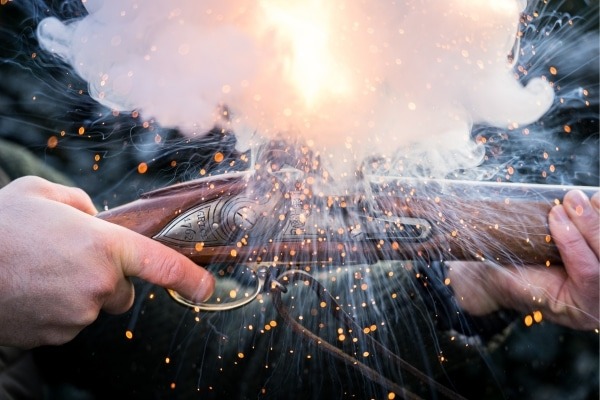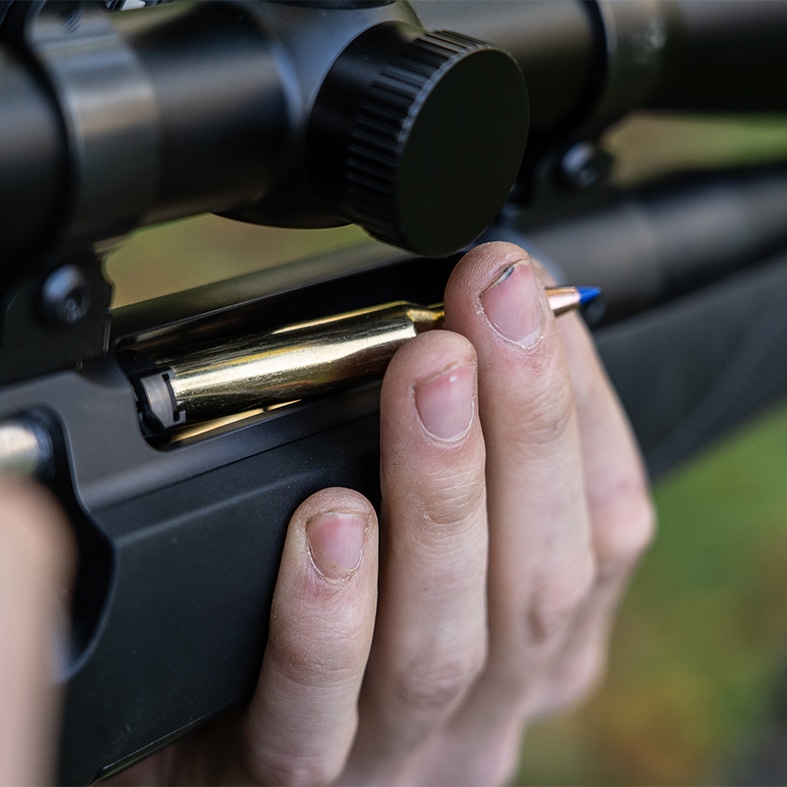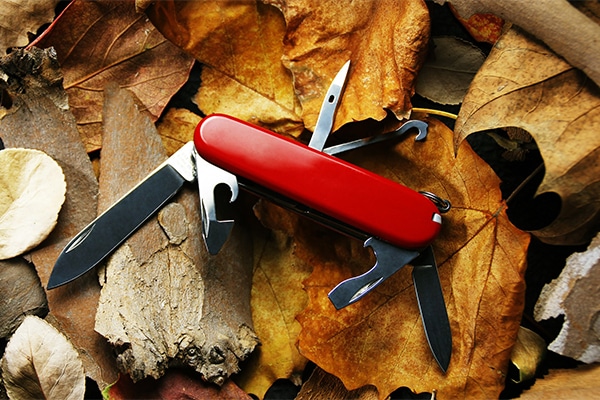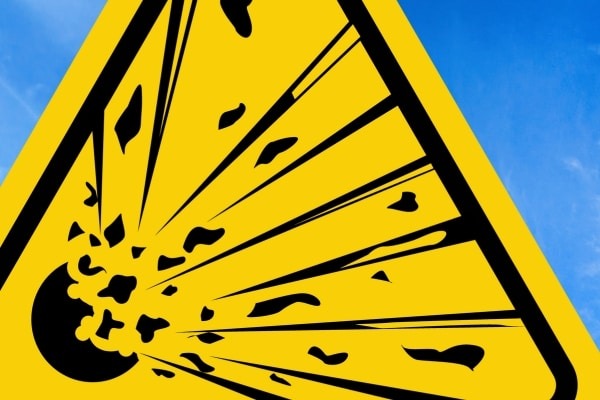
Explosives
Providing you with the information you need on explosives, including storage and best practice in the use of black powder.
Get information on the legal shooting season for mammals and birds in the UK.
Apply for funding for your project or make a donation today
Comprehensive information and advice from our specialist firearms team.
Everything you need to know about shotgun, rifle and airgun ammunition.
Find our up-to-date information, advice and links to government resources.
Everything you need to know on firearms law and licensing.
All the latest news and advice on general licences and how they affect you.


Home » Firearms » Police involvement in shooting » Rifles, Calibres and Land: Advice for Firearms Enquiry Officers
As a result of wide-ranging experiments in the early days of breech loading firearms, we are left today with the two systems of ignition which proved to be most suitable from the points of view of efficiency in use and ease of manufacture. These are rimfire and centrefire.
Only five common cartridges still retain the rimfire method of ignition. These are the .22, (widely used in both pistol and rifle,) the .17 Hornady Magnum Rimfire, the .17 Hornady Mach 2, the .22 Winchester Magnum Rimfire and the 9mm shotgun.
Rimfire cartridges are easily recognisable because the head of the cartridge (the end opposite the bullet) is smooth and flat. The priming compound is contained in this flat head and is ignited when the rifle’s firing pin crushes the rim of the case against the rear of the barrel’s chamber.
Centrefire cartridges have a separate primer, or percussion cap, inserted centrally in the case head. The common 12 bore shotgun cartridge is an example of the centrefire method of ignition.
Many early cartridges in all sorts of calibres were developed on the rimfire principle because of its ease and cheapness of manufacture. However, it has two major drawbacks.
First, the brass case represents over half the total cost of a rifle cartridge, which is a considerable cost in larger calibres and rimfire cases cannot easily be reloaded and re-used.
Secondly, in order to achieve reliable ignition, the brass head of the case must be quite thin. This means that it will not stand the high pressures generated by modern cartridges. To put this in perspective, a .22 R/F develops about 20,000 pounds per square Inch (PSI) of pressure in the breech of the rifle. Most modern centrefire rifle cartridges produce over 50,000 PSI.
In Britain the quarry may be as small as a rat or as large as a red stag. Ranges at which the shot is taken may also vary from a few yards to more than 300, depending on circumstances.
The “right” calibre is very much a matter of individual choice. One calibre is no “safer” or “more dangerous” than another. Suitability for a particular purpose is largely a matter of opinion. As long as an applicant’s choice meets any minimum requirements there are no public safety implications in the use of a larger calibre.
There are some commonly accepted conventions in choice of calibre. These are set out below:
The rifle will usually be fitted with a sound moderator (often erroneously called a “silencer”), and used with “sub-sonic” ammunition. This is ammunition designed to propel the bullet at just below the speed of sound (about 1100 feet per second), thus avoiding the sharp crack of super-sonic bullets and making the moderator much more effective. More about sound moderators later.
There is also a .22 R/F cartridge which produces twice the energy of the standard long rifle round. This is the .22WMR (Winchester Magnum Rimfire). Despite the similar name, the two cartridges are not interchangeable. In an accurate rifle, this cartridge is useful where rabbits must be shot at ranges of 100 yards or more and it is also sufficiently powerful to be a humane choice for fox control, as long as shots are not taken beyond about 100 yards.
The recently-introduced .17 rim fire calibres (HMR & HM2) are a good choice for shooting rabbits and other small pest species at longer range. It is at its best when used beyond about 90 to 100 yards, and it complements the .22 R/F which is preferable for shorter ranges.
There is a plethora of .22 centrefire cartridges firing bullets of about the same size as the .22R/F but at much higher velocity. Those usually encountered in Britain are, in ascending order of power, the .22 Hornet, the .222 Remington, the .223 Remington (which is the same as the 5.56mm Nato cartridge) and the 22/250 Remington. Very occasionally you may come across a .220 Swift.
You may also meet or be asked about the .17 Remington which fulfils the same function using a lighter bullet of around 20 grains weight, at about 4,000 feet per second muzzle velocity.
Don’t be fooled by the names, all but the .17 Remington fire bullets of .224 inch diameter. Bullet weight in the .22 calibres may range from 40 to about 70 grains (there are 437.5 grains to the ounce and 7000 grains to the pound).
Velocities range from about 2,600 feet per second (FPS) to almost 4000 FPS and it is a matter of individual choice as to which cartridge may be most suitable for the intended purpose.
They are all suitable for fox control. All but the .17 Remington and the .22 Hornet are legal for use on roe deer in Scotland, but not (at time of writing), for any deer in England and Wales.
It is worth noting at this point that applicants may well have a “good reason” to acquire rifles chambered for different .22 centrefire cartridges. The most powerful are useful where shots may have to be taken at over 250 yards. However, their extra cost and increased muzzle blast (noise) may mean that one of the less powerful cartridges is preferable where ranges are shorter or human habitations are close by.
An applicant who does a lot of pest control may even need two rifles firing the same, or a closely allied, cartridge so as to be sure of having a rifle available if one is out of service for any reason. There is also the matter of having one light, portable rifle for shorter ranges, and a heavier one with (say) a bipod and a heavy barrel for longer ranges.
The Deer Act 1991 stipulates a minimum calibre and minimum muzzle energy of .240″ and 1700 ft/lbs for the lawful shooting of all deer species in England and Wales, except for only Chinese water deer and muntjac, where a minimum bullet weight of 50 grains, minimum calibre of .220 inches and minimum muzzle energy of 1000 ft lbs applies. Scottish legislation is slightly different and includes a minimum velocity requirement; there are two sets of ballistic minima, one specified for all deer species and a reduced requirement for roe deer only.
The next smallest deer commonly encountered, the roe deer, is likely to weigh twice as much as a muntjac and a red stag may be 15- or even 20-times heavier. Larger and more powerful cartridges firing a heavier bullet of greater diameter are generally appropriate for fallow, red and sika deer and are definitely required for the shooting of wild boar.
Those unfamiliar with the physical characteristics of rifle cartridges are often concerned that a cartridge with a large and impressive sounding name will be much more powerful and therefore in some way much more dangerous. This is simply not true, and there are three very good reasons why.
First, no responsible rifle user will take a shot before ensuring that his or her bullet, after passing through the target, will embed itself safely in the ground. With such discipline being fundamental to the use of sporting rifles in the field, the calibre of the rifle is of no importance whatever.
Second, on the very rare occasions when a high-velocity bullet may ricochet it will be deformed, unstable and therefore unlikely to travel very far. It’s kinetic energy decays very quickly. This is broadly the same for all calibres used for hunting in Britain. Hunting bullets, unlike the military full metal jacket types, are designed to deform and expand on contact with even the soft skin and flesh of an animal.
Third, experiments established that a bullet fired vertically into the air will reach a height of about 9,000 feet in 19 seconds before falling back to earth in another 36 seconds or so. The falling bullet only has remaining velocity at that point of some 300 fps. This is about the velocity of a pellet fired from an air pistol though the energy would be greater because of the greater weight of the bullet.
There often appears to be an unfounded fear of sound moderators. They are seen, perhaps, as the tool of either poacher or assassin. One can only say that should such individuals require “silencers” they would be unlikely to apply to the police for permission to acquire them!
Setting such groundless fears aside, there are several excellent reasons why an applicant may wish to reduce the noise made by the discharge of a rifle. For that is all that a sound moderator does, it has no other function, it merely reduces the “boom” of the discharge.
This benefits the ears not only of the shooter (who is nearest to it), but also those of other people in the vicinity and the much more sensitive ears of nearby livestock. This is particularly so at night when most rabbit and fox control take place.
A moderator may also be appropriate for deer control either in a park or close to human habitation where disturbance is best kept to a minimum.
The nearest approach to actual silence is when a moderator of very high quality is fitted to a .22 R/F rifle, firing low-powered ammunition at below the speed of sound (approx. 1100fps). Sound moderators cannot reduce the supersonic crack caused by the flight of high velocity bullets.
In some situations, quite apart from any benefit to the operator, it may be an act of social responsibility to fit a sound moderator to a rifle.
N.B. A rifle which incorporates an integral sound moderator does not need a specific variation granted by the licensing authority.
This is a subject which probably causes more ill-feeling and frustration for both applicant and police than any other aspect of the licensing process.
It is BASC’s firmly held opinion, supported by the findings of the Firearms Consultative Committee, that checks to see if a particular area of land is suitable for the use of a rifle of a particular calibre are a waste of time. It is the user of the rifle who is “safe” or “unsafe”; not the rifle itself; and certainly not the land.
However, we seem to be stuck, for the moment, with the unsatisfactory system of assessing land for suitability. An enquiry officer, presented with the duty of signing a report to say that a certain piece of land is “safe”, tends to err on the side of caution. This, while understandable, is no help whatever to the applicant needing to control rabbits, foxes or deer on that land and is seen as ridiculous when one considers that another rifle user, with an “open” certificate, may quite probably shoot there.
We feel that it would save a great deal of stressful confrontation if reports on land were worded along the following lines:
“The land at……. extends to some …. acres and is bounded on the west by a busy A class road and on the north by the lane from …. to …. There are two public footpaths crossing the land and a bridleway runs across the north-east corner; none are very much used. The village of ….. lies just over a mile to the south-west etc. The land is of a rolling nature, with many areas where a line of fire would present a safe backstop. A sensible person could use a rifle quite safely on that land provided that care was taken to ensure that safe backstops were identified and that anyone using the neighbouring roads and rights of way was not endangered or alarmed.”
It is also a cause of widespread discontent that Home Office guidance on land checks is never followed. Section 13.13 of that guidance advises that, “When land inspections are required, the knowledge and experience of local shooters, stalkers, gamekeepers etc. should be drawn upon.”
BASC’s wish and purpose is to assist the easy and efficient working of the firearms legislation both for the benefit of our own members and for that of the licensing authority. We have no more desire than the police to see firearms in the wrong hands but will not tolerate unreasonable difficulties being put in the way of legitimate certificate holders.
In a leaflet such as this we can only skim lightly over what is a fairly complex technical subject. Please remember that BASC is there to help you with tricky problems in just the same way as we help our members.
Got a question? Email us on firearms@basc.org.uk or call 01244 573 010.
© BASC July 2023

Providing you with the information you need on explosives, including storage and best practice in the use of black powder.

Bill Harriman discusses what you should look for in a knife, the pros and cons of different knives and how to choose the right one for you.

Succinct advice on the law surrounding the storage of civil explosives in the UK, including requirements for record-keeping.
Sign up to our weekly newsletter and get all the latest updates straight to your inbox.
© 2025 British Association for Shooting and Conservation. Registered Office: Marford Mill, Rossett, Wrexham, LL12 0HL – Registered Society No: 28488R. BASC is a trading name of the British Association for Shooting and Conservation Limited which is authorised and regulated by the Financial Conduct Authority (FCA) under firm reference number 311937.
BASC Direct Ltd is an Introducer Appointed Representative of Agria Pet Insurance Ltd who administer the insurance and is authorised and regulated by the Financial Conduct Authority, Financial Services Register Number 496160. Agria Pet Insurance is registered and incorporated in England and Wales with registered number 04258783. Registered office: First Floor, Blue Leanie, Walton Street, Aylesbury, Buckinghamshire, HP21 7QW. Agria insurance policies are underwritten by Agria Försäkring.
If you have any questions or complaints about your BASC membership insurance cover, please email us. More information about resolving complaints can be found on the FCA website or on the EU ODR platform.